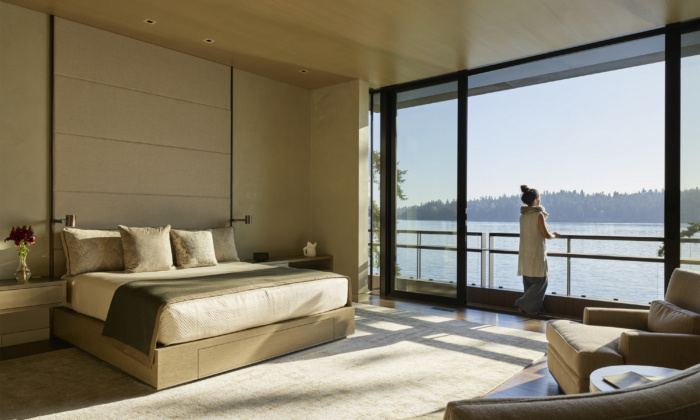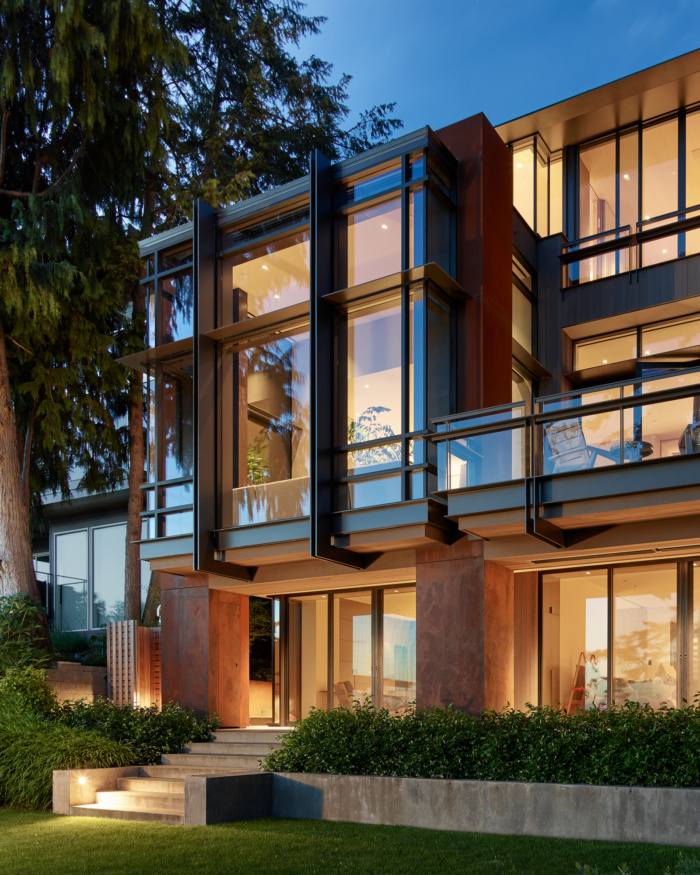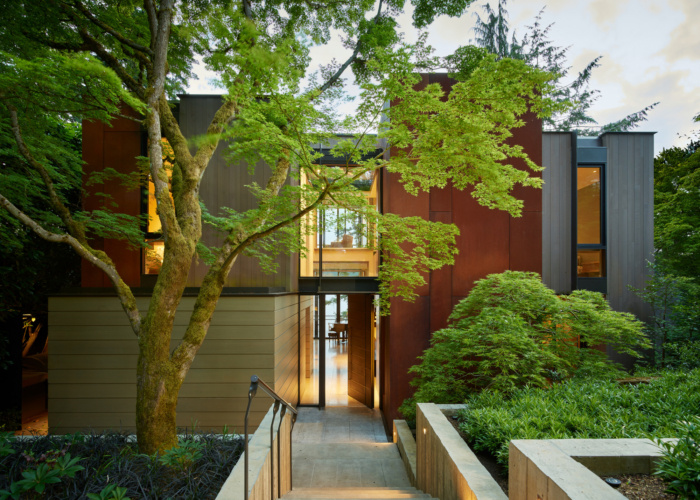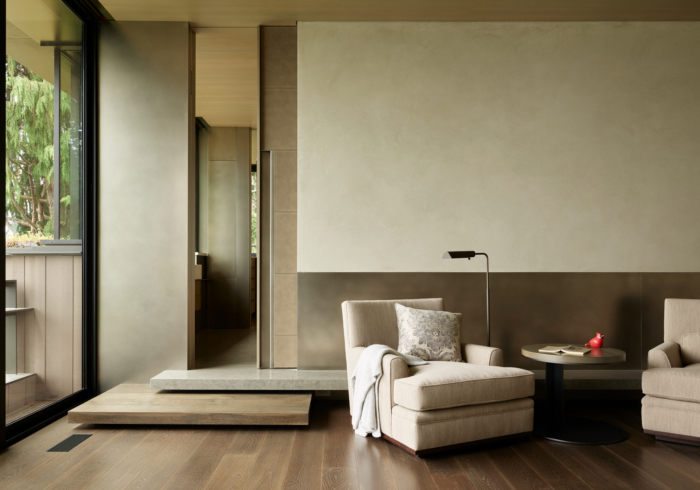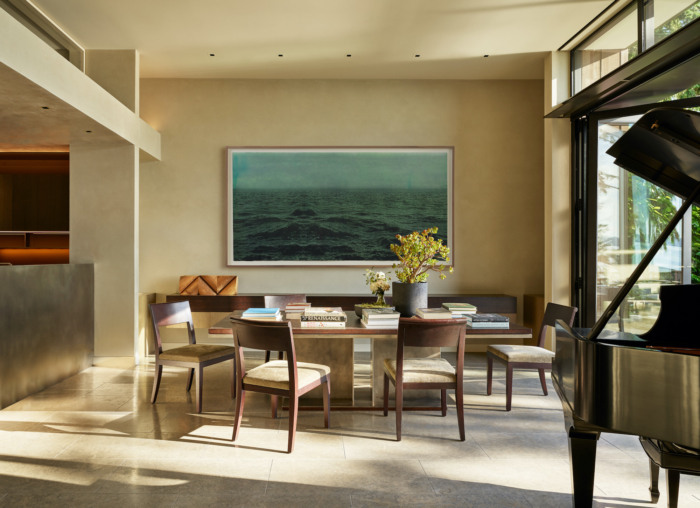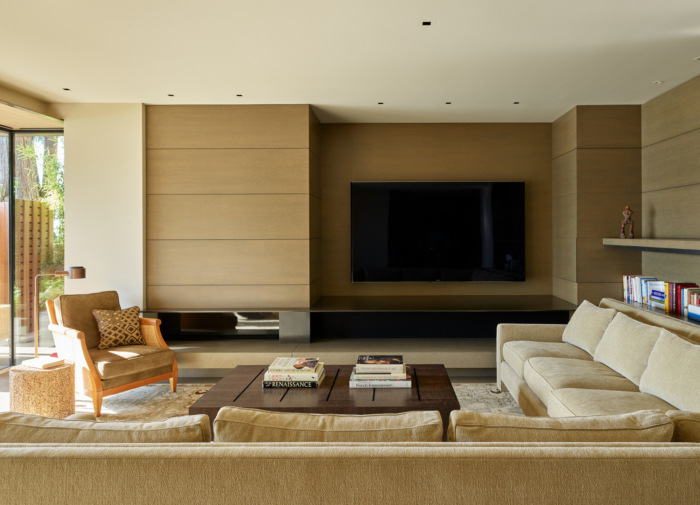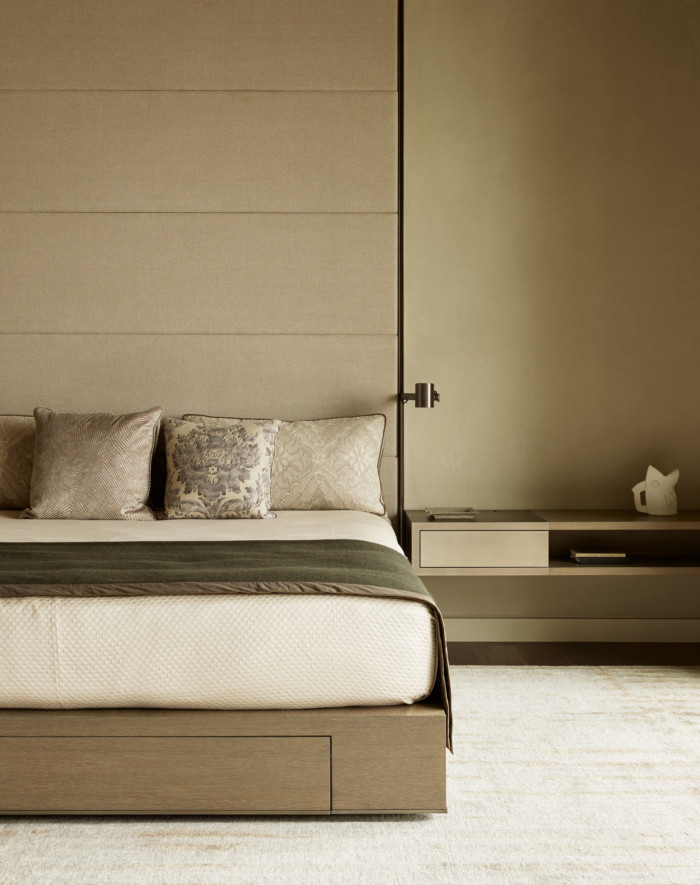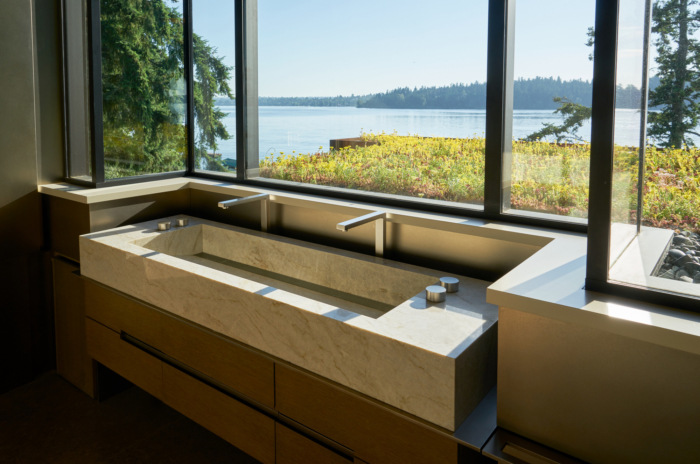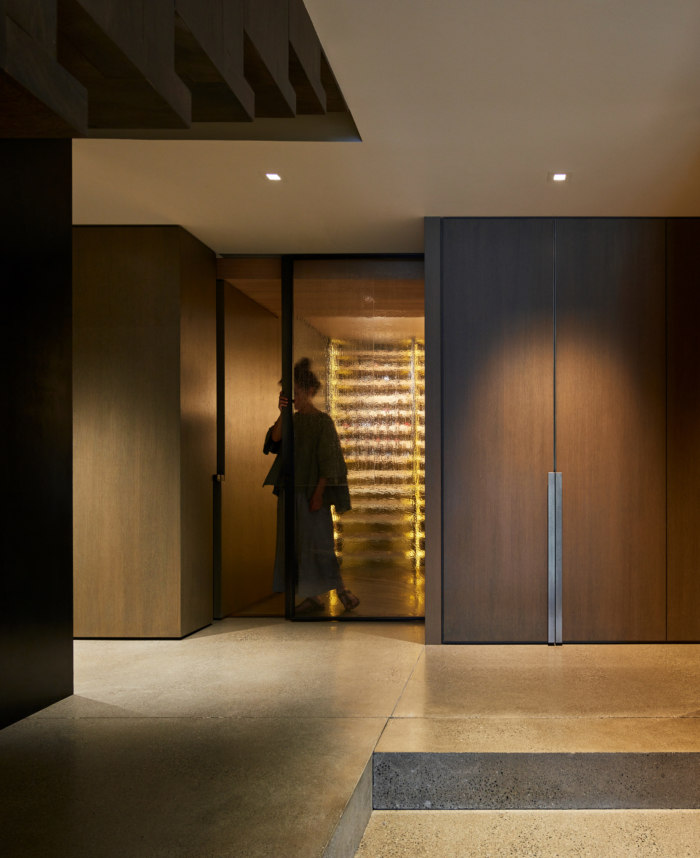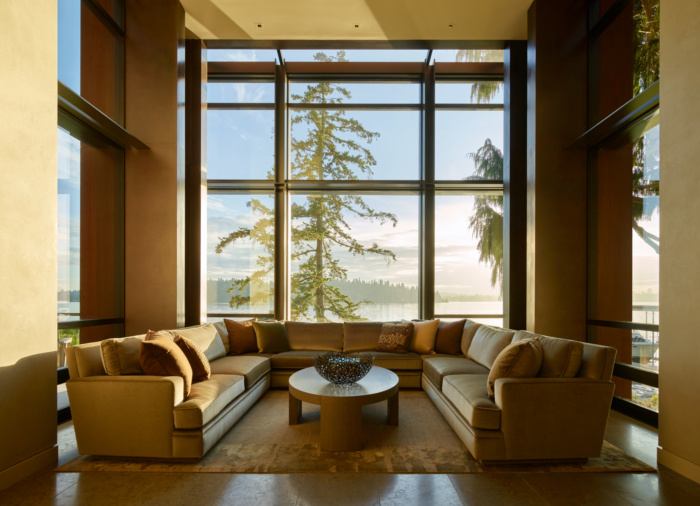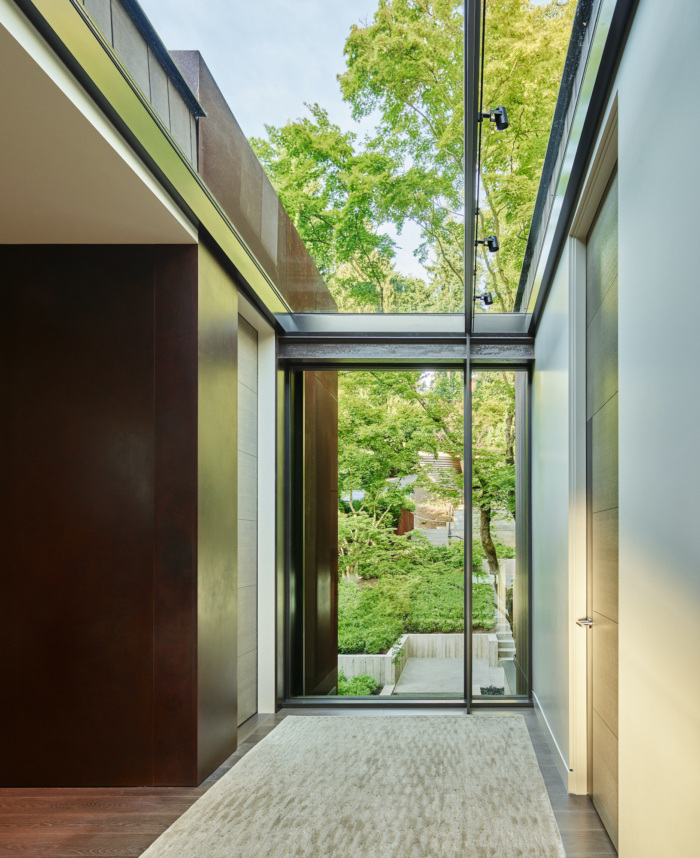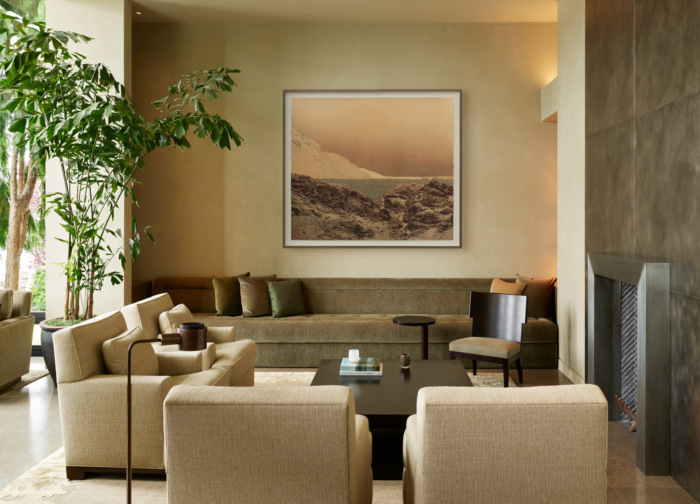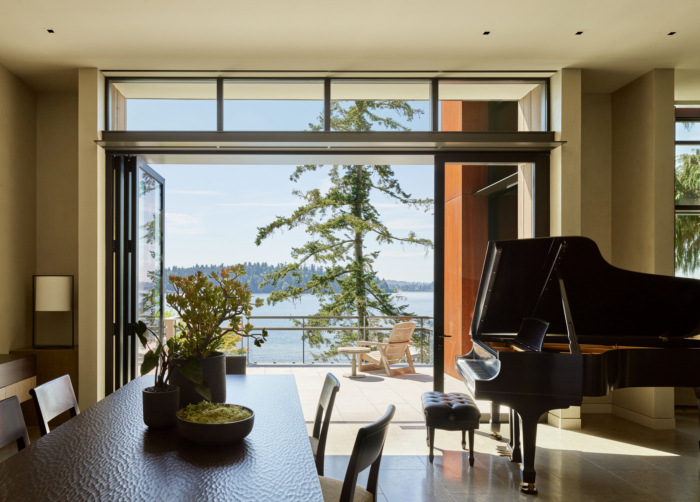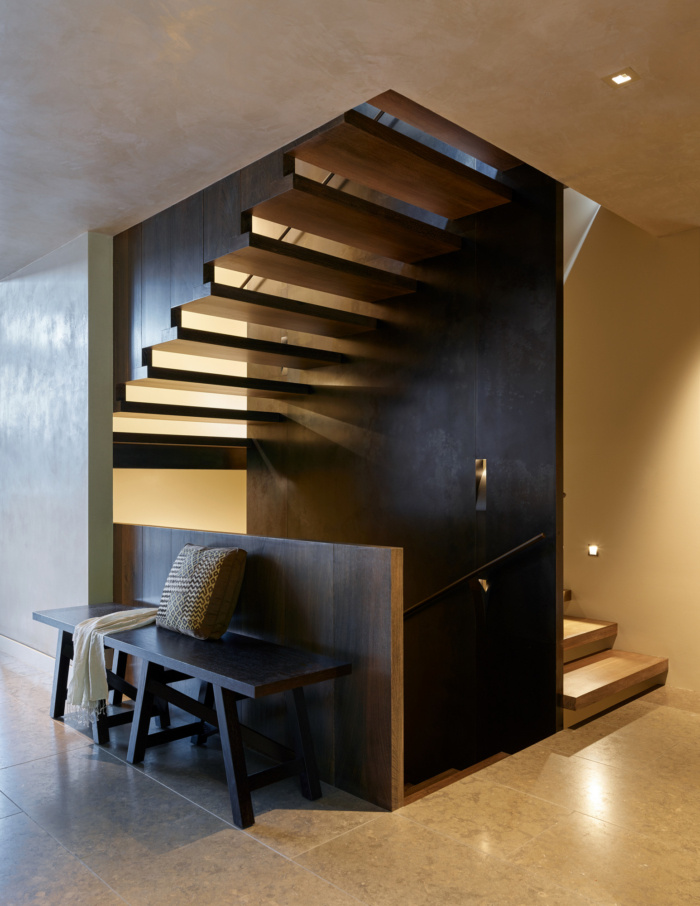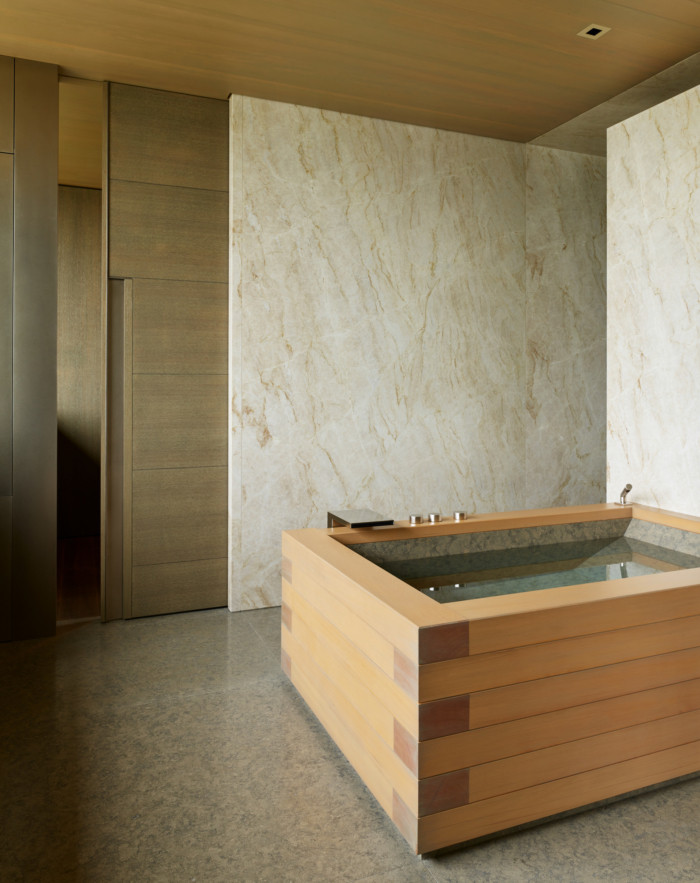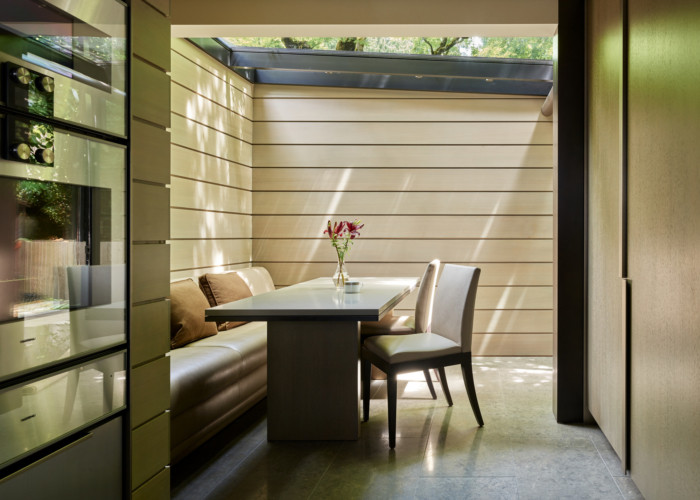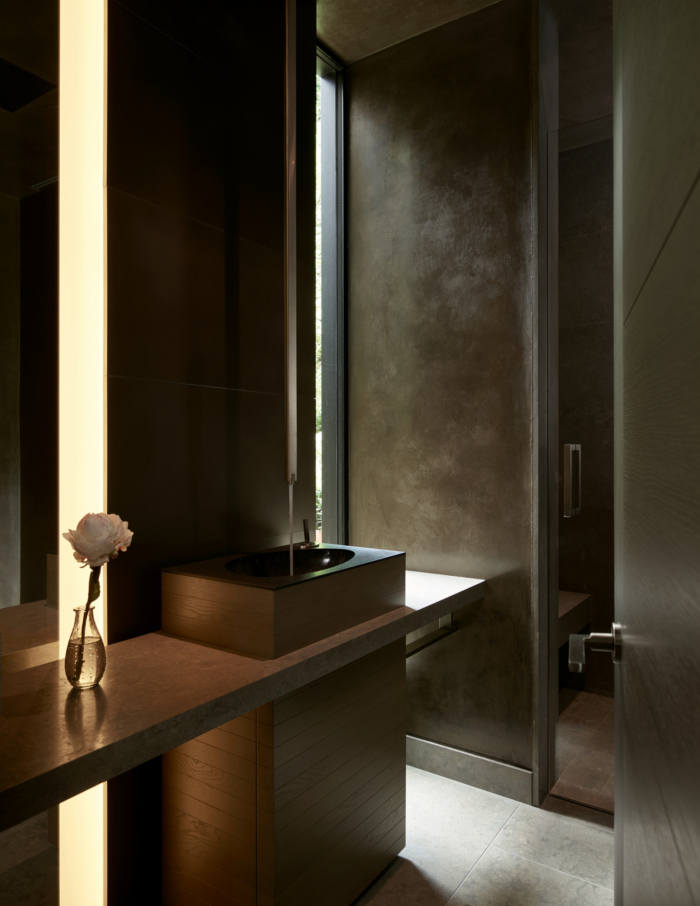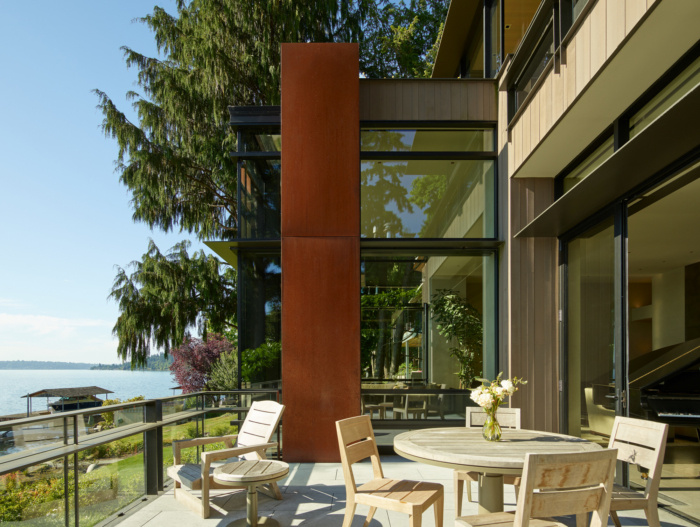Lakeside House
Situated on the water’s edge with direct connection to nature, Graham Baba Architects with interior designer Terry Hunziker restored design integrity back to this 1960s Seattle home with a complete interior transformation.
Originally built as a modest beachfront cabin in the 1960s, and subsequently modified through a series of piecemeal renovations, by the time our client acquired the house its design integrity had long ceased to exist. The forested property, however, was ideally suited to the creation of a quiet refuge with direct connections to nature.
The journey from street to house is conceived as a journey, where work and public life gives way to nature and private reflection. The 60-foot drop from entry drive to water’s edge, was not without challenges. To preserve views of the lake and to mitigate the nearly half-acre property’s steep slope, the upper driveway winding through the forest. Approximately halfway down the site is the carport. The final steps to the house pass through a series of intimate landscapes. A two-story glazed entry feature provides glimpses through the house to the water from the moment one enters the site. Planted roof surfaces help to merge the house with its setting.
Inside, the house was taken back to the studs and completely reworked. The main floor and formal entry, the middle of the house’s three floors–serves as the public zone of the house. Here, spaces including the galley kitchen and breakfast room, and dining and living, flow one to the other. A small guest room rounds out the main floor. A second floor was added to provide separation for private spaces, including the master suite and kids bedrooms. The staircase connecting the floors was conceived as a set of floating wood slabs (fumed white oak) that appear to float within a wood enclosure. The basement supports family-oriented spaces including the family room, exercise room, play room, and a wine room. Previously closed off from the waterfront, the basement now opens directly to the waterfront, enabling activities to flow from inside to outside.
Materially rich finishes (polished concrete and stone, cerused rift white oak wood, fumed oak floors, and blackened steel) balance the otherwise crisp and spare detailing found throughout the house. Everything from door pulls to sink faucet levers were meticulously designed, detailed, and fabricated. Stand out features include the staircase with floating wood slabs, custom bead-blasted nickel hardware, an oversized Japanese soaking tub, and sliding leather paneled pocket doors to master bedroom and bathroom. Concealed doors and integrated handrails reinforce the minimal aesthetic without sacrificing rich materiality.
Outside, variously-sized, dark-stained cedar siding provides subtle dimension and shadow effects. Cor-Ten siding wraps selected portions of the exterior to articulate the composition and massing. Integrated sunshades and fins on all west-facing windows marry function with aesthetics, adding visual texture while mitigating direct sun exposure.
Design: Graham Baba Architects
Interior Design: Terry Hunziker
Photography: Kevin Scott

